
Failed cavity wall insulation removal how we do it!
A 50mm injected foam cavity-fill plus 20mm PUR external gives 0.28W/m². When it comes to using external wall insulation to insulate a solid wall, you'll be looking at the following figures: 100mm EPS gives 0.31W/m². 70mm rigid foam gives 0.30W/m². 110mm mineral wool, wood fibre, hemp batts gives 0.30W/m².
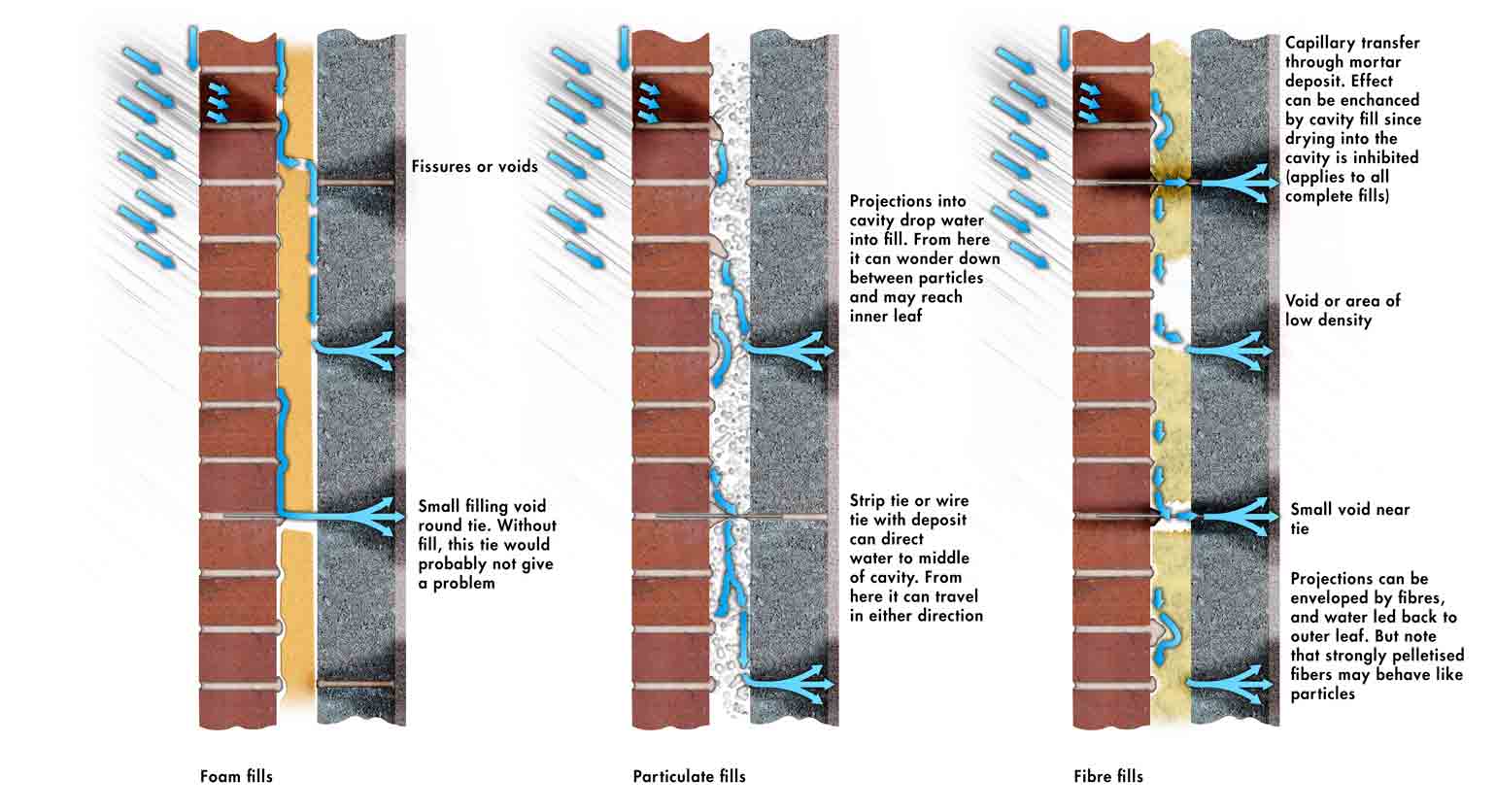
Wet Cavity Wall Insulation Protection
ENERGY STAR Single-Family New Homes, Version 3/3.1 (Rev. 11) National Rater Field Checklist. Thermal Enclosure System. 2. Fully-Aligned Air Barriers. 7 At each insulated location below, a complete air barrier is provided that is fully aligned as follows: Walls: At exterior vertical surface of wall insulation in all climate zones; also at interior vertical surface of wall insulation in Climate.

Cavity wall insulation with spacers between bricks and breeze blocks on a new conservatory
Cavity walls are exterior walls with a gap in the middle and is generally found in houses built after 1920 (though there are exceptions to the 'rule'). The outer leaf is usually made of brick with inner layers either constructed from brick or concrete blocks. The gap can be filled with insulation to improve the thermal performance of a building.
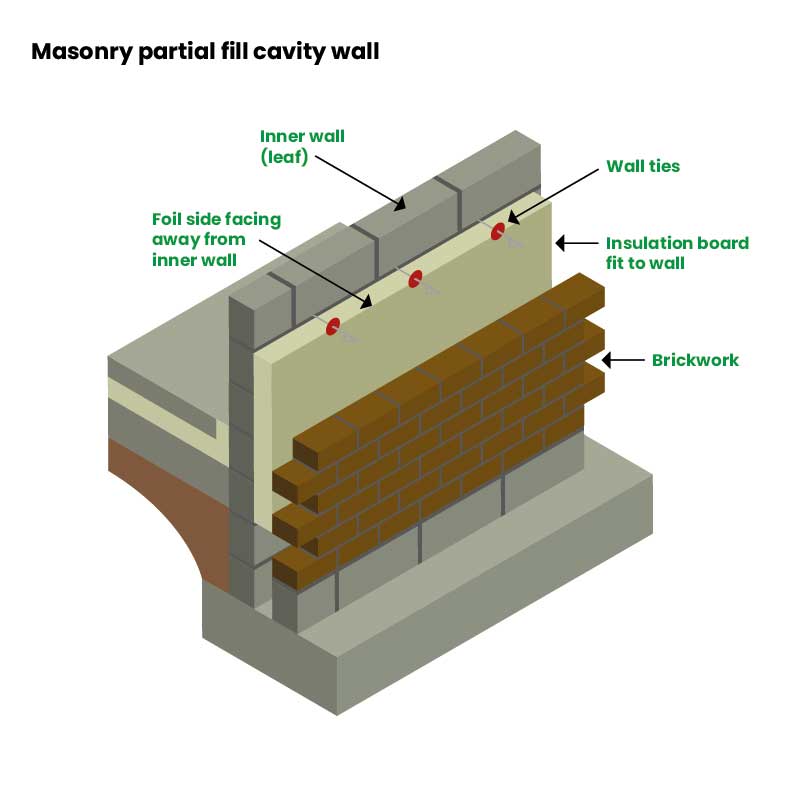
Cavity wall insulation buyer’s guide Insulation Superstore Help & Advice
Advantages of Cavity Wall Insulation. If CWI is the only option for you, it does offer some benefits: CWI does not alter the external appearance of your property. CWI helps to reduce your energy bills. CWI keeps your house warmer in the winter. CWI helps to reduce your carbon footprint. CWI is very quick and easy to install.
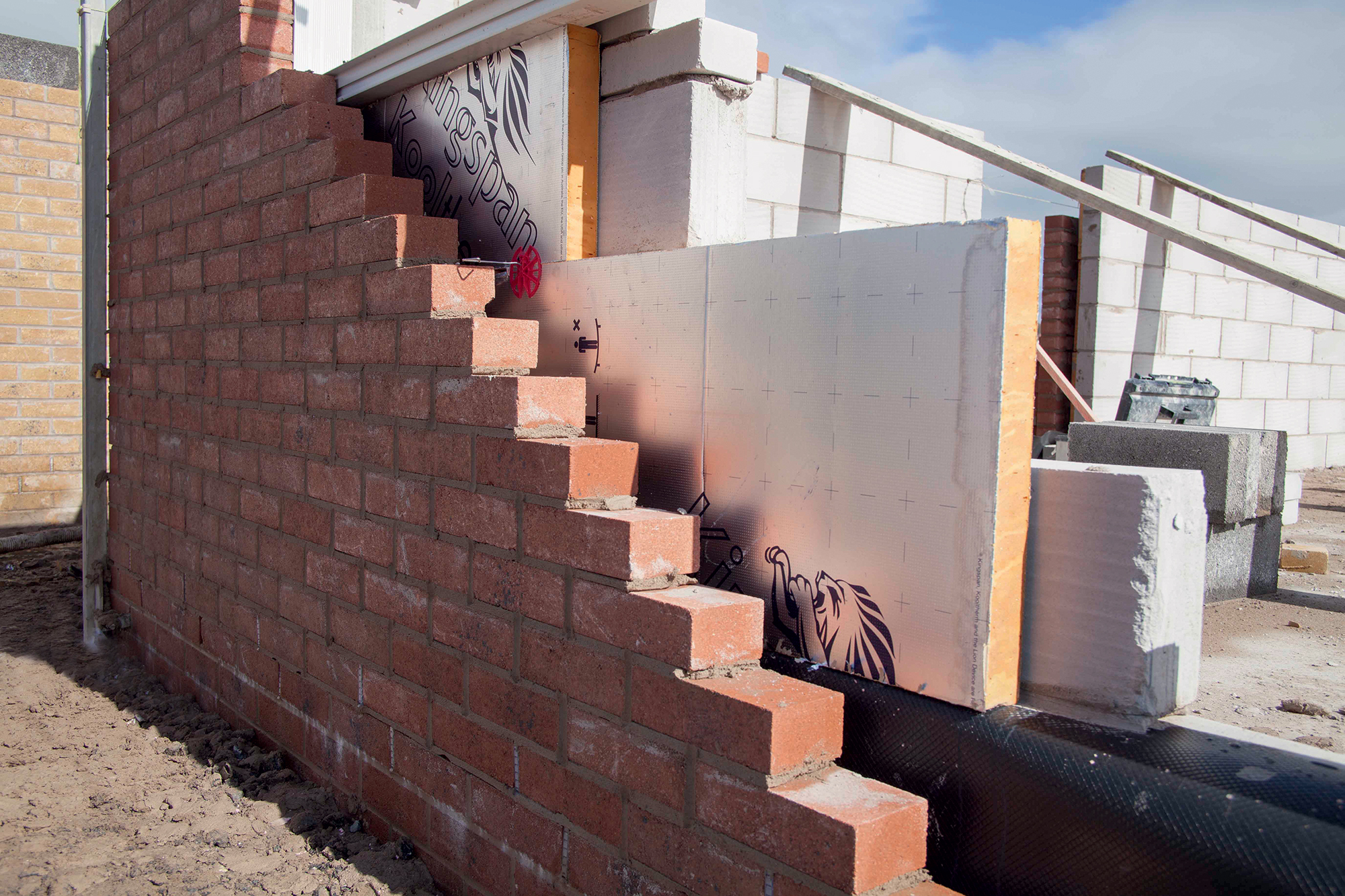
Cavity wall insulation new builds Page 2 — MoneySavingExpert Forum
External wall insulation is more like cladding, so systems that use foam insulation, such as those normally used for a filled cavity wall, are unsuitable. Solid wall insulation is the type of insulation system to use to external walls, with rendering adding a final finishing touch.
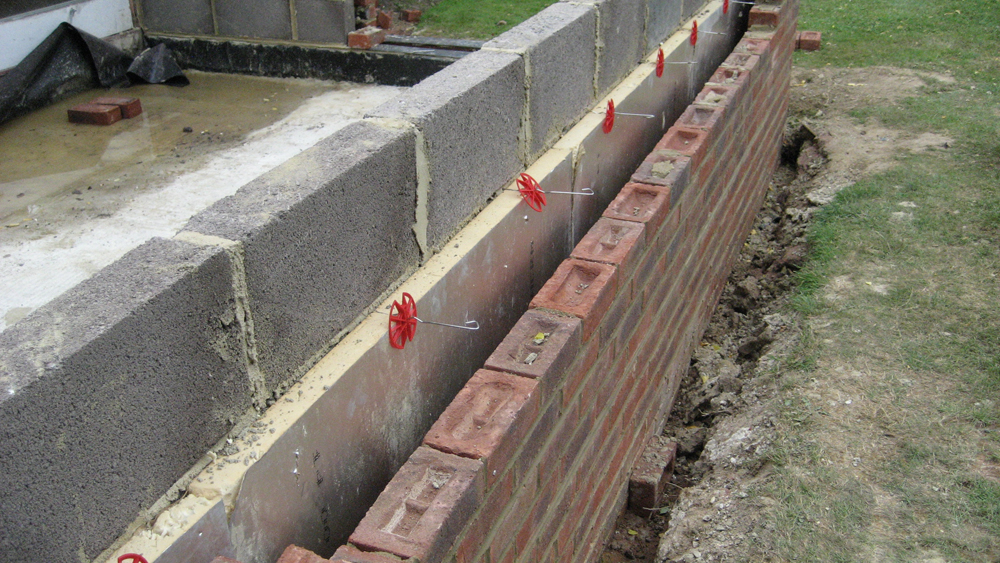
Cavity Wall Insulation DIY Installation Guide DIY Doctor
Exterior wall cavities offer a unique space to add quality insulation to increase the efficiency of your home and reduce your monthly heating and air conditioning bills. The pros and cons of insulating a cavity wall are numerous. They include all of the positives that come with insulation, such as saving money on heating and cooling electricity.
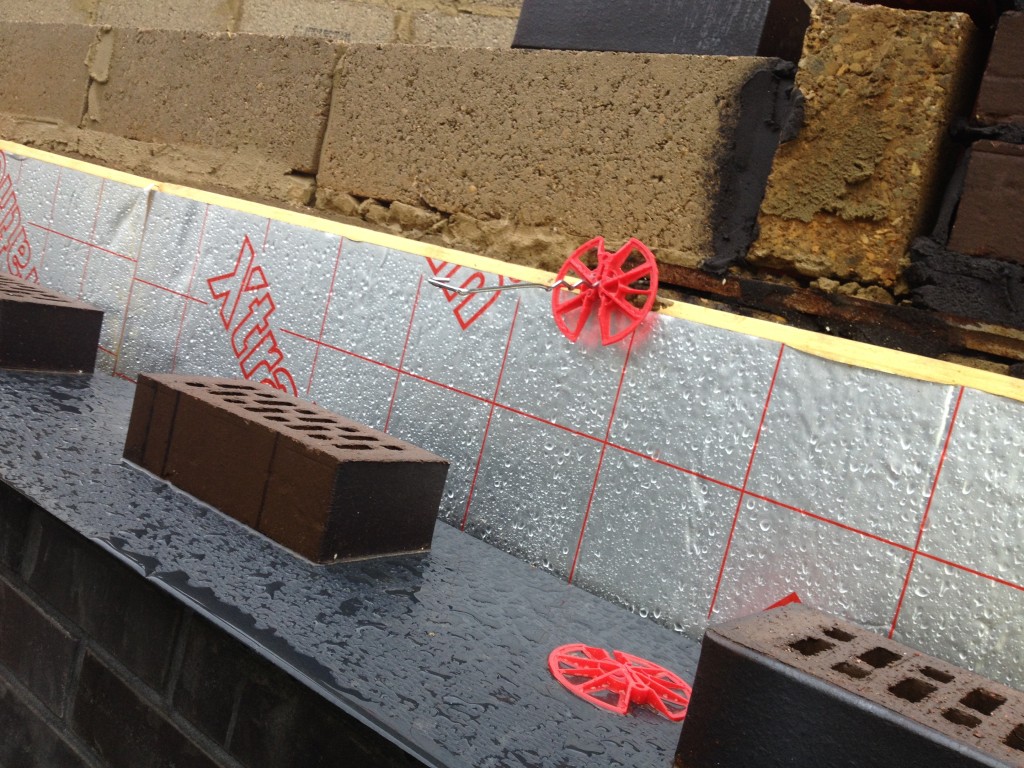
How do you insulate hard to treat cavity walls? TheGreenAge
A huge benefit of cavity wall insulation is that the installation is very quick and you often won't even see it taking place, plus it is the easiest retrofit option. It can often be installed in a morning. To start, holes, known as mortar holes, are drilled in the bricks around every 60cm, a nozzle is inserted into the hole and insulating.
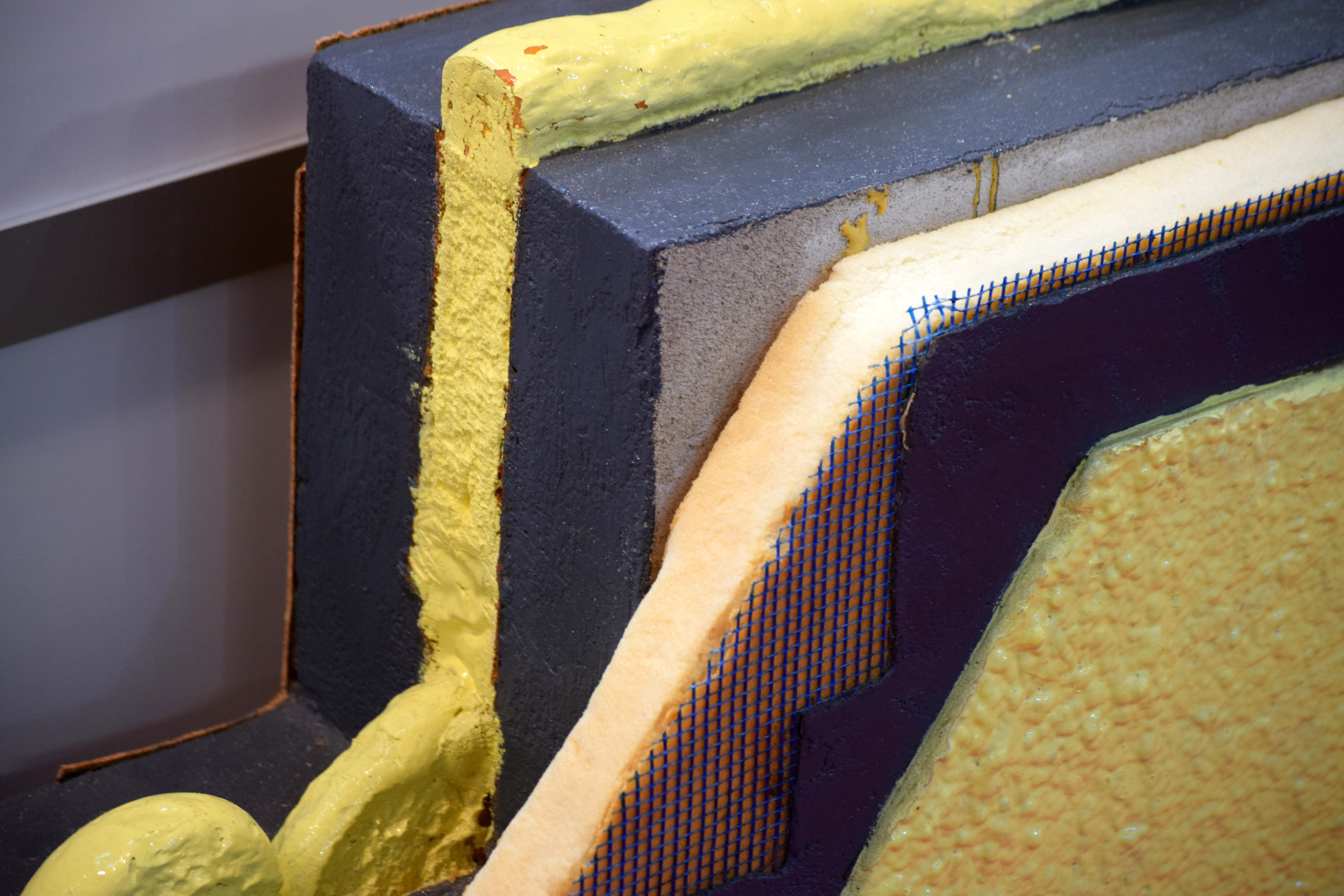
How to install cavity wall insulation Energy Saving Trust
Fitting insulat i on for cavity walls is among the quickest and most cost-effective ways to improve energy efficiency. Whether its slabs for new build s and extensions, or granulate for renovations.. Materials with strong thermal insulation properties are key to delivering effective external walls 2. An uninsulated cavity will cause a lot of heat loss during a cold period.
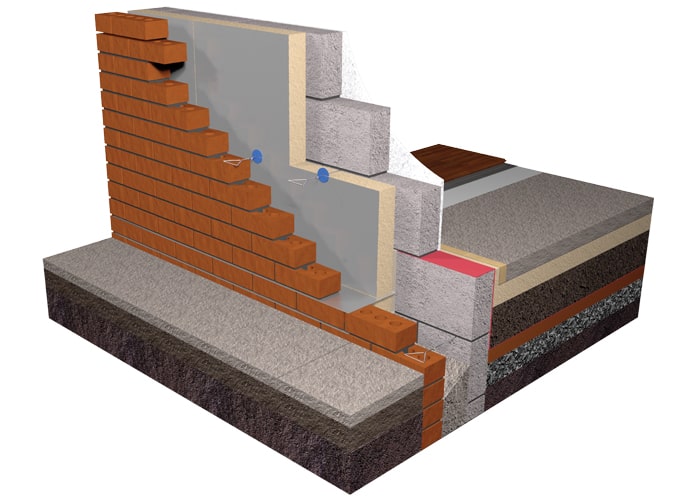
Insulating masonry cavity walls with partial fill insulation Mannok Insulation
Steps on Insulation Installation. 1. Cut to Width. Photo by Ryan Benyi. For narrow stud bays, you have to trim down the batt's width. To do that, lay a batt on the floor in front of the cavity, as shown, and line up one edge with the inside face of the stud bay. Then lay a straight 2×4 in line with the inside face of the neighboring stud and.

PU SPRAY INSULATION & CAVITY WALL Greenland Management Services Sdn. Bhd.
These are the best materials for insulating your home. 1. Blown mineral wool insulation. Mineral wool can be blown into a property's cavity walls to form an energy efficient insulating layer. On the cavity wall insulation cost front it's on the lower end and offers good performance.
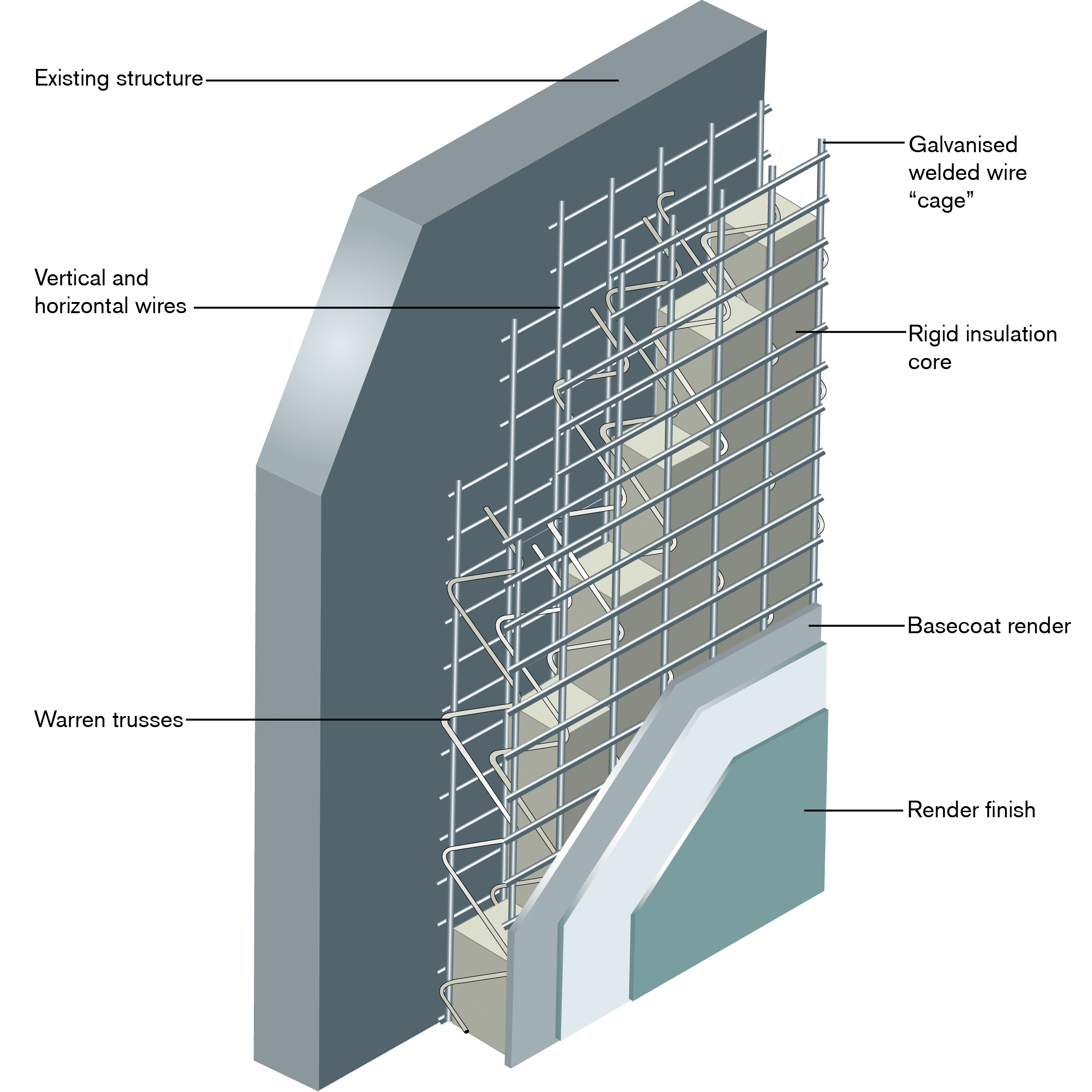
Structural External Wall Insulation For NonTraditional Refurbishment
External Wall Insulation (EWI) is a way of improving the energy efficiency of your home by insulating its external walls. It's particularly useful for buildings with solid walls, where cavity wall insulation isn't an option, but it can also be used to enhance cavity wall insulation in some circumstances.

Cavity Wall Insulation Claims Cavity wall, Cavity wall insulation, Wall insulation
Cavity wall insulation (CWI) is a type of insulation inserted into the space inside the walls of a property - the cavity. Cavity walls are formed by two walls of brickwork built close together, between which the insulation is injected. Most homes built after 1920 have cavities, whereas older homes tend to have solid walls.
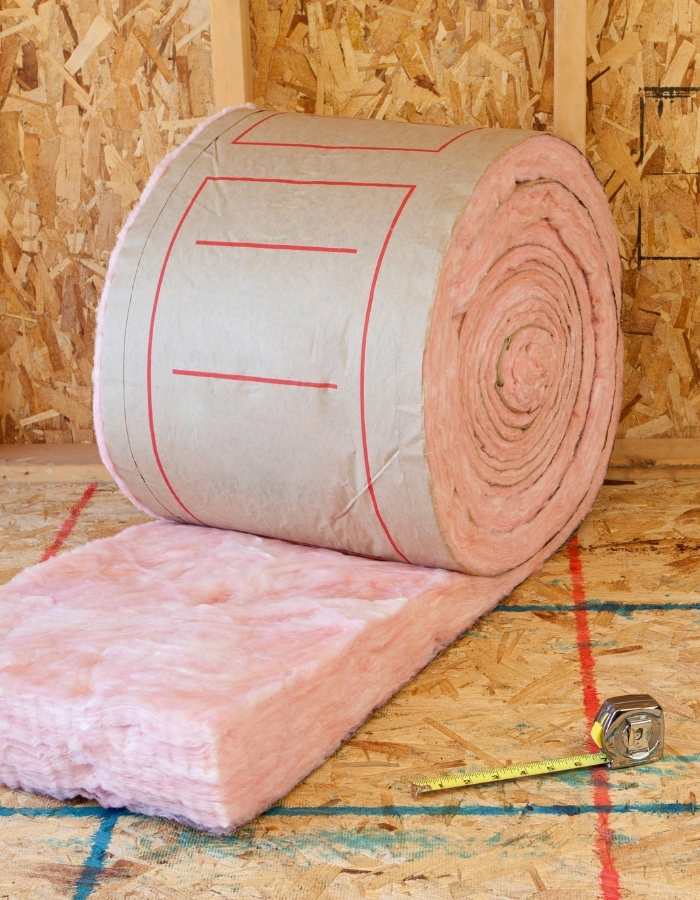
External Wall Insulation Specialists Homes & Exterior Walls
Blowing insulation into the wall cavity is the top option if you want to save on utility bills. Loose fill cellulose or fiberglass can be used for cavity wall insulation, and you will need a professional contractor to do the job. Bear in mind that it does mean that small holes will be made in order to install the cavity wall insulation.

Walls External Masonry Cavity Wall Cavity Claims
NyRock Cavity Slab 032 is a semi-rigid stone wool insulation slab designed specifically for use between the studwork of external timber or light gauge steel frame walls. Designed using NyRock technology, which delivers a thermal conductivity of 0.032 W/mK, the lowest lambda stone wool insulation currently available in the UK. View product.

FREE Loft Insulation & Cavity Wall Insulation Energy Efficient You
Cavity wall insulation is the insulation material that is installed into the cavity of a building, which is the space between the inner and outer wall. Cavity wall insulation traps the warm air in and prevents air from circulating around the cavity. By reducing heat loss through the cavity, you could save on your heating bills as well as your.

Identifying cavity wall insulation problems Collier Stevens
1. External Wall Insulation External wall insulation is the best way to insulate your walls. External insulation involves fixing insulation materials such as mineral wool or expanded polystyrene slabs to the outer surface of the wall. The insulation is then covered with a special render to provide weather resistance. A steel or
- Brother Heavy Duty Sewing Machine
- 6mm 3 Core Steel Wire Armoured Cable
- Clip On Ties Near Me
- Paris Saint Germain Balmain Top
- Matt Papa Christ Our Hope In Life And Death Lyrics
- Biggin Hill Airport Flying Lessons
- You Are Enough T Shirt
- Drainage Pump For Washing Machine
- Orthotic Insoles For Achilles Tendonitis
- Kinderkraft Unimo 5 In 1 Cradle